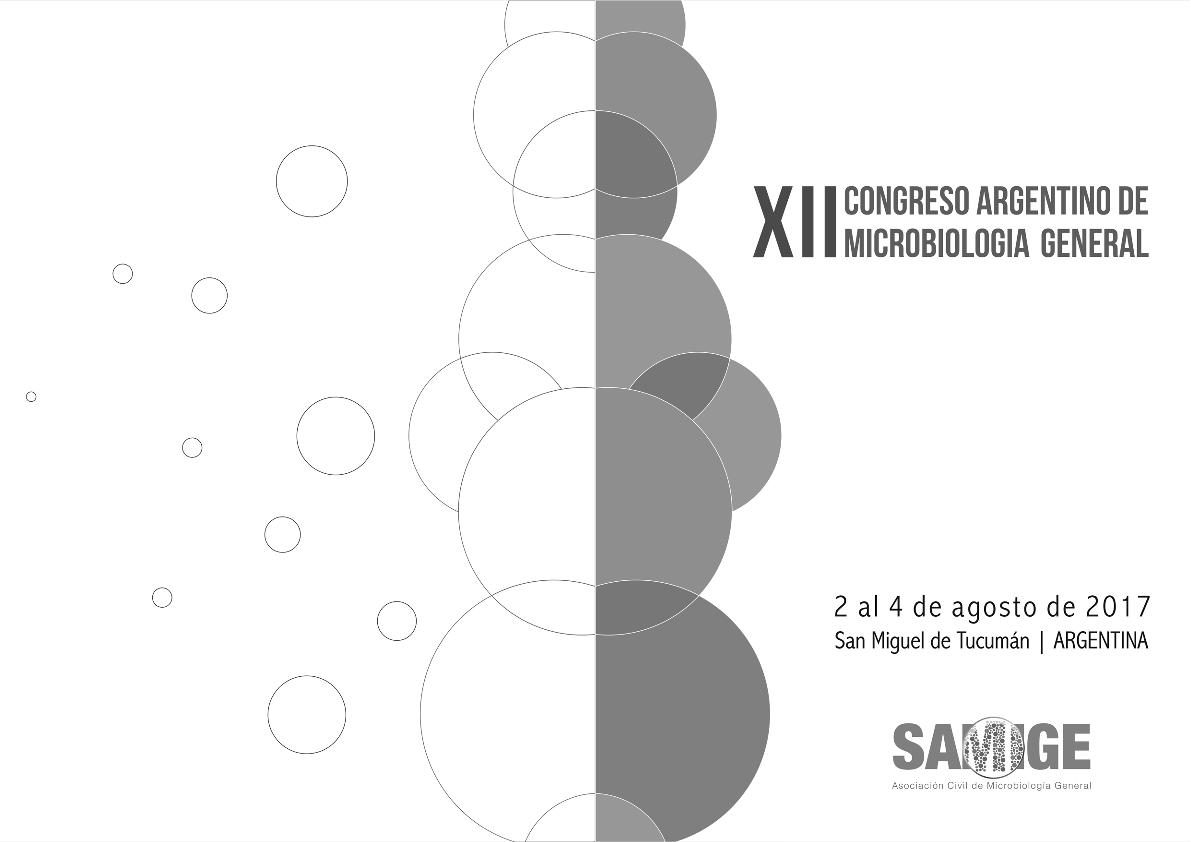Evento
Biofilm producing lactic acid bacterial as an alternative to control food contaminations
Merino, Lina Ethel ; Trejo, Fernando Miguel
; Trejo, Fernando Miguel ; de Antoni, Graciela Liliana; Golowczyc, Marina Alejandra
; de Antoni, Graciela Liliana; Golowczyc, Marina Alejandra
 ; Trejo, Fernando Miguel
; Trejo, Fernando Miguel ; de Antoni, Graciela Liliana; Golowczyc, Marina Alejandra
; de Antoni, Graciela Liliana; Golowczyc, Marina Alejandra
Tipo del evento:
Congreso
Nombre del evento:
XII Congreso Argentino de Microbiología General
Fecha del evento:
02/08/2017
Institución Organizadora:
Asociación Civil de Microbiología General;
Título del Libro:
XII Congreso Argentino de Microbiología General
Editorial:
Asociación Civil de Microbiología General
Idioma:
Inglés
Clasificación temática:
Resumen
Biofilms are complex structures of microorganisms that colonize various biotic or abiotic surfaces. These organized communities are formed by bacteria embedded in a highly hydrated extracellular matrix that is composed mainly of polysaccharides, proteins, DNA and other substances. Several bacterial surface structures are necessary for this surface adhesion and an environment that favors the formation of biofilm against planktonic growth is required. The presence of biofilms is common in food industry and represents a concern because bacteria can adhere to almost any type of surface,such as plastic, metal, glass, soil particles and wood. Lactic bacteria are generally recognized as safe (GRAS) and could be an alternative for the biocontrol of pathogenic microorganisms biofilms forming in the food production chain. Use of probiotic biofilms can be an alternative approach for reducing the formation of pathogenic biofilms in food industries.The objective of this work was to study the biofilm production of lactic acid bacteria in different substrates and in different surfaces such as plastic, glass and stainless steel, commonly used in food industry. Biofilm formation was measured by violet crystal and plaque counts of seven strains of lactobacilli: Lb. kefiri CIDCA 83113, CIDCA 8321, CIDCA 8344 and CIDCA 5818, Lb. plantarum CIDCA 83114 and CIDCA 8327 and Lb. delbrueckii subsp. lactis CIDCA 133. These have different characteristics such as presence of S-layer, exopolysaccharide or glucan production, autoaggregation and hydrophobicity.The percentage of autoaggregation by decreasing OD at 600 nm and the percentage of hydrophobicity by partition in hexadecane and xylene (MATH method) was measured. For measurement of biofilmformation, 1 ml of medium (MRS and BHI) was inoculated with lactobacilli in 24 wells culture plates.For viable counts, the adhered bacteria were resuspended in PBS and counted in MRS agar plates.Only Lb. kefiri CIDCA 8321 and CIDCA 8344 strains presented a percentage of autoaggregationgreater than 50%. Both strains also showed the highest hydrophobicity. None of the lactobacilli tested form biofilm in BHI medium. On the other hand, except for CIDCA 8321 strain that did not develop biofilm on any probed condition, the lactobacilli can form biofilm in MRS medium. The lowest biofilm production was observed in plastic, whereas in glass and stainless steel lactobacilli present high capacity of biofilm formation. It is remarkable that Lb. plantarum CIDCA 83114 is the one with the highest capacity for biofilm formation in the three surfaces studied, being stainless steel the most suitable surface for biofilm production. We observed that both hydrophobic and hydrophilic strains are capable of producing biofilm. We demonstrated that lactobacilli can form biofilm and this property depends on surface and growth media. This could be used as an alternative control of food pathogens.
Palabras clave:
BIOFILMS
,
BIOFILMS
,
LACTOBACILLI
,
LACTOBACILLI
Archivos asociados
Licencia
Identificadores
Colecciones
Eventos(CIDCA)
Eventos de CENTRO DE INV EN CRIOTECNOLOGIA DE ALIMENTOS (I)
Eventos de CENTRO DE INV EN CRIOTECNOLOGIA DE ALIMENTOS (I)
Citación
Biofilm producing lactic acid bacterial as an alternative to control food contaminations; XII Congreso Argentino de Microbiología General; San Miguel de Tucuman; Argentina; 2017; 1-3
Compartir



